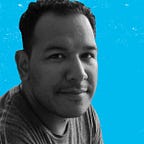5 ways to bake-in accessible design into your UX Research
We Need to Plan for Accessibility and Inclusivity.
I’m noticing that most of the content around accessible design lives in the UI aspects of design, such as type font sizes for the visually impaired, color choices for color blindness, and screen reading features. Do a quick search of “accessible design” and you’ll know what I mean.
All of these are great and should be practiced, however I’d like to shift the discussion on accessible design to earlier on in the design thinking phase, specifically in the research phase. Because creating a space for accessibility early on: cultivates inclusive mindsets towards serving a broader spectrum of users, increases the usability of products for all users, protects your product from lawsuits, and ultimately increases business ROI.
In a recent webinar hosted by Raquel Breternitz titled, Build accessible and Inclusive Products, an interesting conversation swirled around ideation activities to design for accessibility, including:
- Testing the color choices of your screens under bright sunlight to mimic visual disabilities and impairments.
- Testing your prototype using only one hand to mimic physical disabilities and impairments.
- Conducting the blindfold test of navigating your prototype visually impaired.
- And saying “No” to the golden path, as the ideal user does not exist.
I’m also noticing with startups and medium-sized companies that I consult with that accessible design is still a growing pain not yet understood or practiced. Some design teams mentioned that they don’t even have a project management methodology like Agile in place, so entertaining accessible design keeps getting shelved until sound workflows are in place.
Where has this been done before?
Reflecting on my 10 years in education, I noticed an opportunity for any design team to begin implementing accessible design early on in the planning and understand stages of design.
Backwards Design is a framework for learning design by Grant Wiggins and Jay McTighean, outlined in their book Understanding by Design. The gist is that when educators plan a new unit, they should start with the end in mind. Outlining the big ideas and skills to be learned followed by actually doing the final project, informs the educator of the skills and content necessary for learners to achieve mastery of the subject.
How will the educator adjust their lesson and materials to teach English Language Learners? Learners with ADHD? Cognitive processing disorders? The visually impaired?
They plan for it. They differentiate their instruction. At least, the best ones do.
Educators plan to reach a diverse set of learners in the class based on the learning community’s known learning differences, learning styles, cultural contexts, and other demographics.
Within the unit design, professional educators consider:
- Using more visuals for English language learners to construct meaning.
- Chunking out writing activities leading up to a whole piece.
- Providing extra time to practice new academic language in context.
- Organizing seating by different reading levels in heterogeneous groups.
So how is this connected with product and UX/UI Design? Let’s draw upon those best practices of differentiation and backwards design in the planning stage of unit design, and explore what that might look like in the design space.
By addressing accessibility within your design team’s research plan in the goals and objectives, a more holistic approach to accessibility and inclusivity can be met. Instead of addressing accessibility in later prototyping stages as an afterthought, this practice puts accessibility and inclusivity at the forefront of design. This benefits not only the users, but the designers who no longer need to waste time changing design systems or creating new user flows based on usability tests conducted late in the game.
5 ways to Bake-in Accessible Design Into Your UX Research
Here are 5 ways my design team at City of Wind Design implements accessible design in our design approach.
Research Goals and Objectives. What if your research was informed by goals framed around accessibility? What kinds of research questions come to mind in addressing objectives tailored to accessibility? Here are some we’ve used in the past:
- Understand how people with disabilities are currently x.
- Evaluate the needs & wants of users with disabilities with x.
- Identify tools & approaches users with disabilities currently use to x.
Subject Matter Experts SMEs. Consider groups of people who will interact with your product in different ways. Who can you include in your SME plan who can provide broader insights on this unique user behavior? Who champions accessibility and inclusivity in the market space?
The Users. Include 20% user interviews to include those with disabilities. These users’ insights can be found in user interviews, contextual inquiries or ethnographic research, like journaling.
Adjust User Interview Questions. It’s OK to go off script, especially with ethnographic interview questions. Consider new questions to learn from a diverse group of users than a set of rigid questions.
- How do you work around usability problems?
- What are some shortcuts you employ?
- What is most important to you?
Hire Designers with Disabilities. Maybe outside the scope of each research plan, but by now you can see the benefit of including diverse viewpoints within your design team.
I hope these thoughts and practices can be used in designing for accessibility and inclusivity for your next design sprints. Let me know how it goes!
David is a Product Designer at City of Wind Design, a design studio that specializes in serving startups through UX design & software development with a bias toward accessibility & sustainability. To learn more about David Pinedo visit: https://www.davidpinedo.com or follow @davidpinedo24 on Twitter.
Like what you read? Comment below for design topics & themes you’d like to learn more about & I will aim to share my thoughts on them.
